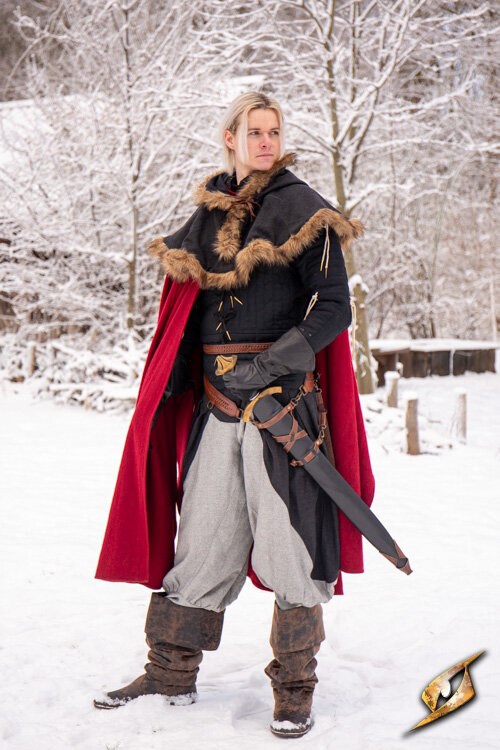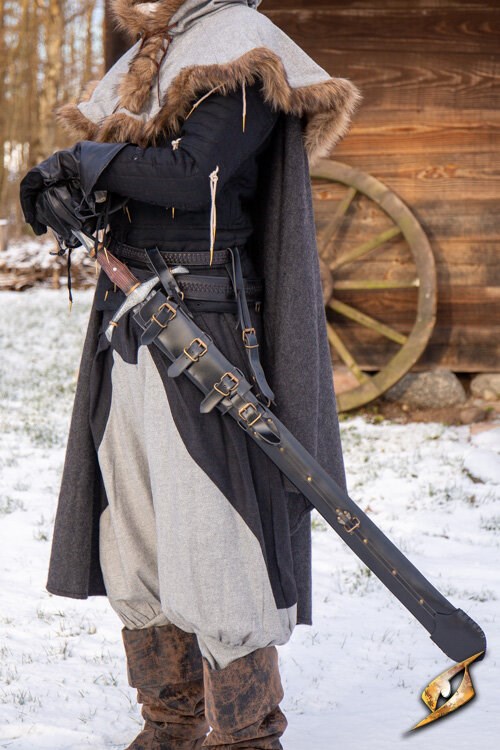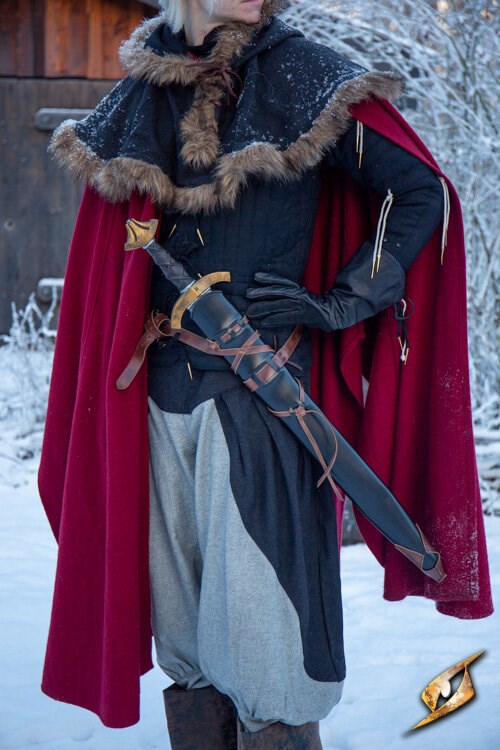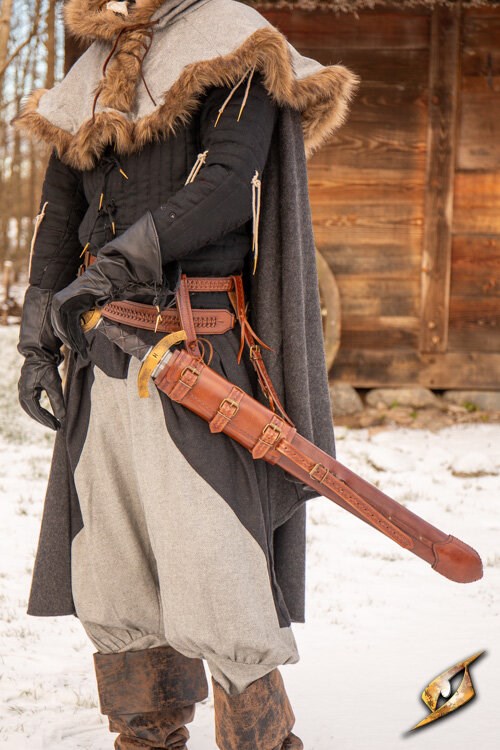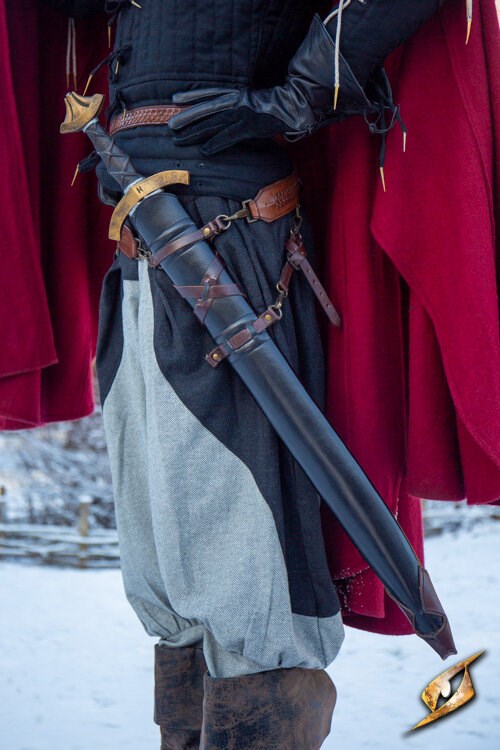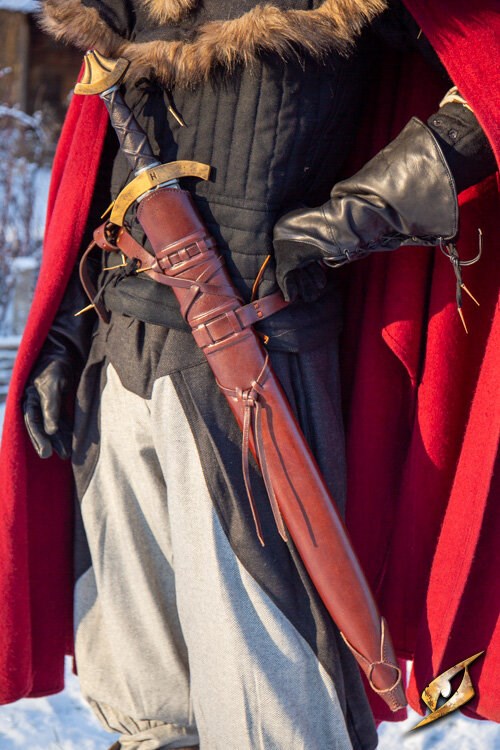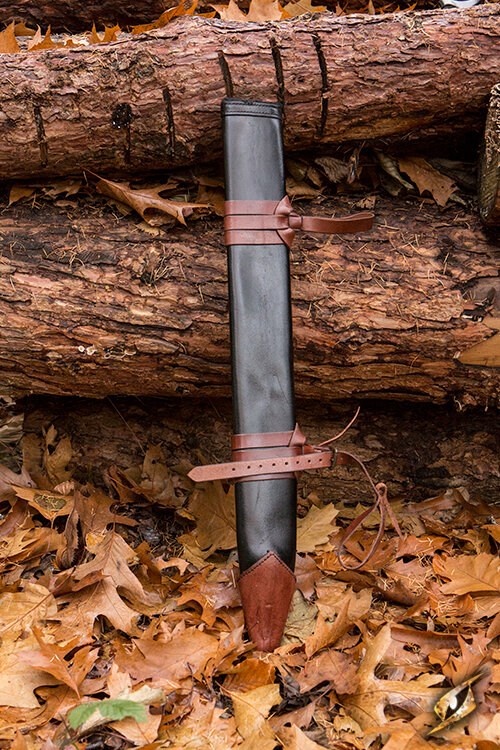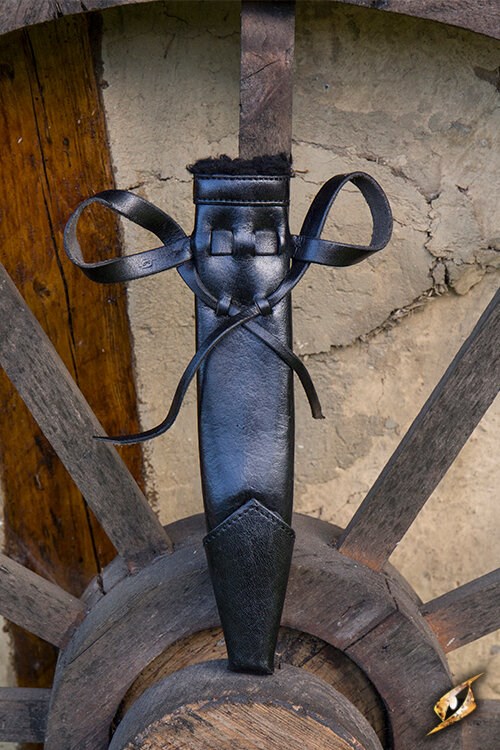
Unveiling the New Age of Scabbards
A Call to Arms and Elegance
Attention, noble explorers and esteemed fighters! Your pleas have reached us, alongside the sight of your battle-worn blades, and we present the perfect answer — our latest collection of scabbards. Crafted for warriors of every stature, our scabbards come with ambidextrous design, adjustability, and a range of sizes to suit all. Whether you aim to embody the quintessence of knighthood with our Knight's Scabbard or prefer the versatility offered by the Adjustable Scabbard for a tailored ensemble, our selection promises to elevate your gear to legendary status.
The Adjustable Scabbard; Versatile and Functional
Epic Armoury's Adjustable Scabbard revises how warriors carry their swords, merging traditional functionality with modern adaptability in a versatile 2-in-1 design. Crafted from premium leather, this scabbard accommodates swords of various lengths and widths up to 7 cm, and shifts between a full-length sheath and a minimalist sword holder. Its adjustable nature ensures a perfect fit for both broadswords and slender rapiers, making it an essential companion for every weapon.
The true brilliance of the Adjustable Scabbard is found in its intricate strap system, which allows for extensive customisation. With an array of straps, rings, and a snap hook, warriors can adjust the scabbard's length and how it hangs, ensuring a bespoke fit for any battle stance. Designed to be worn on either hip and to cater to both left and right-handed users, this scabbard promises both comfort and style. To fully grasp the possibilities offered by this innovative scabbard, we encourage you to watch our video demonstration, highlighting its ease of use and the breadth of customisation available. Embrace the future of armament with the Adjustable Scabbard, where practicality meets personal expression.
SHOW ME THE ADJUSTABLE SCABBARD IN LEATHER! (AND FAUX-LEATHER)
Which Scabbard to choose?
Style and versatility have been the core of our design process for these scabbards.
We wanted to create distinct looks fitted to various character concepts while still embodying our design cores in their distinct way.
Additionally, there were a few challenges relating to scabbards, swords and their connected use in LARP that we wanted to solve:
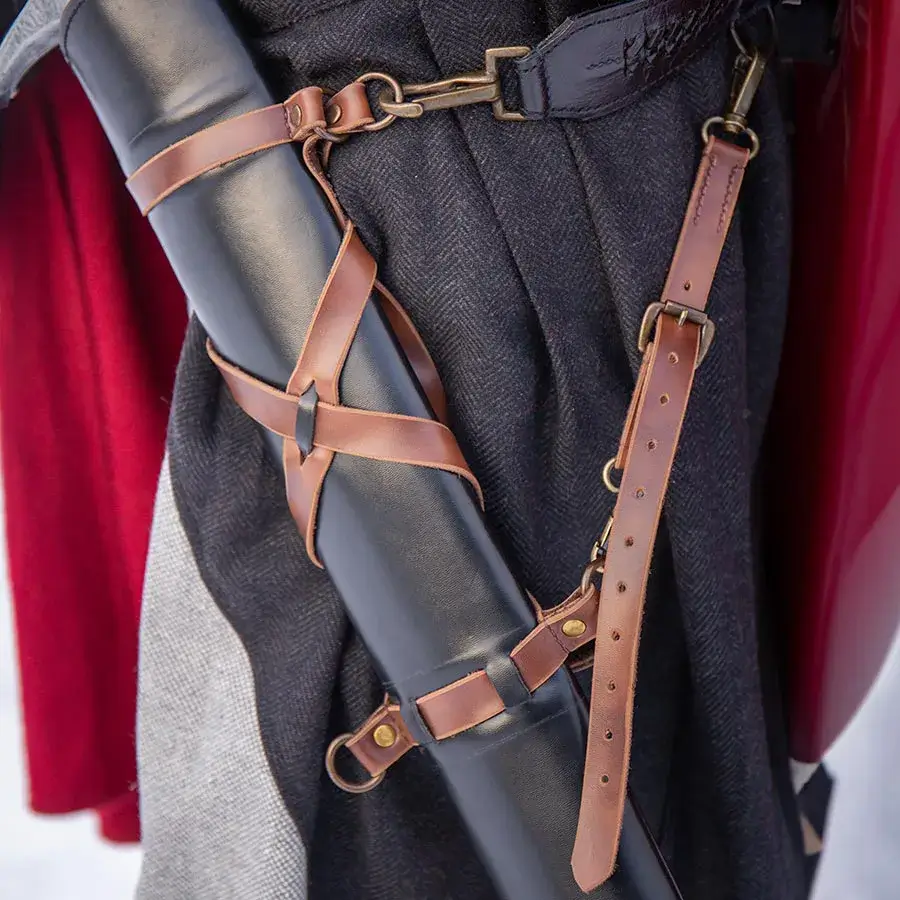
The first challenge, as we lovingly call it, was “lefties out of luck”.
For many years, most scabbards and holders on the market were made to rest on your left side and draw it with your right hand. No more, we tell you! The Sword Belt Scabbard (faux-leather) and Adjustable Scabbard (leather and faux-leather) are constructed to sit on both sides of your hips without affecting the style and look!
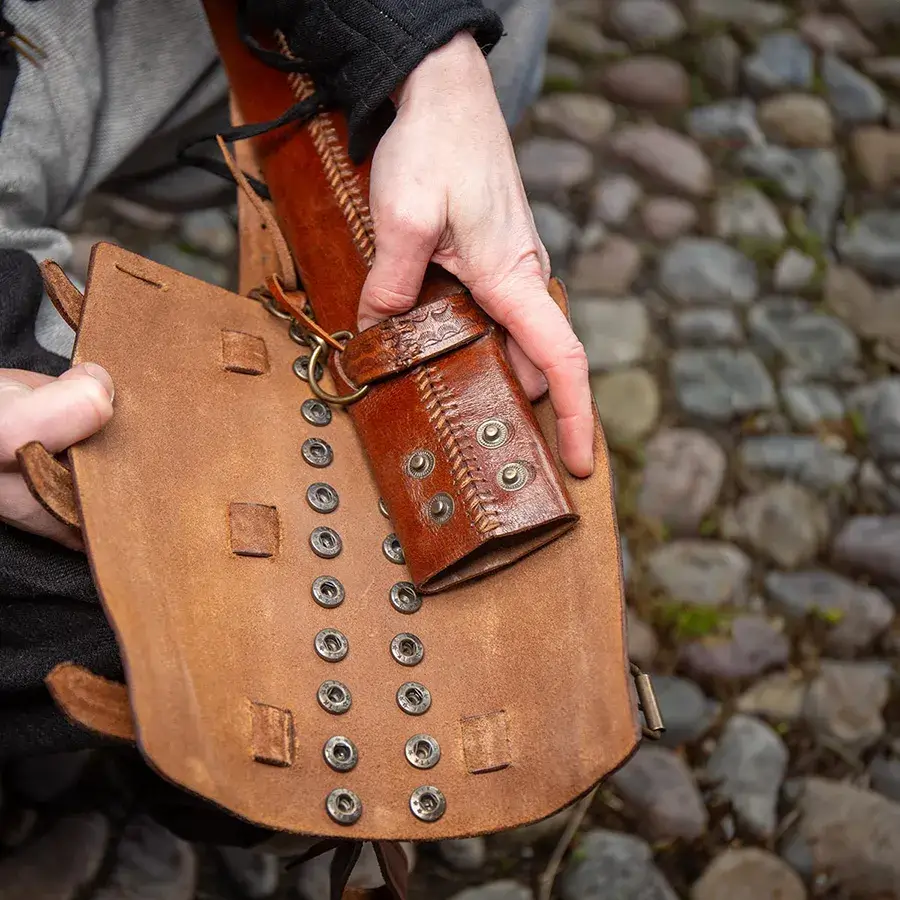
Another challenge we saw was adaptability. Many of us play different characters; for some concepts, a full scabbard might work, and for others, we prefer a stylish holder.
This is why the Sword Belt Scabbard can be purchased in a full sheath model (faux-leather) and holder model (faux-leather), whereas the strap system on the Adjustable Scabbard (leather and faux-leather) makes it possible to switch between holder and full scabbard. It's a 2-in-1 system!
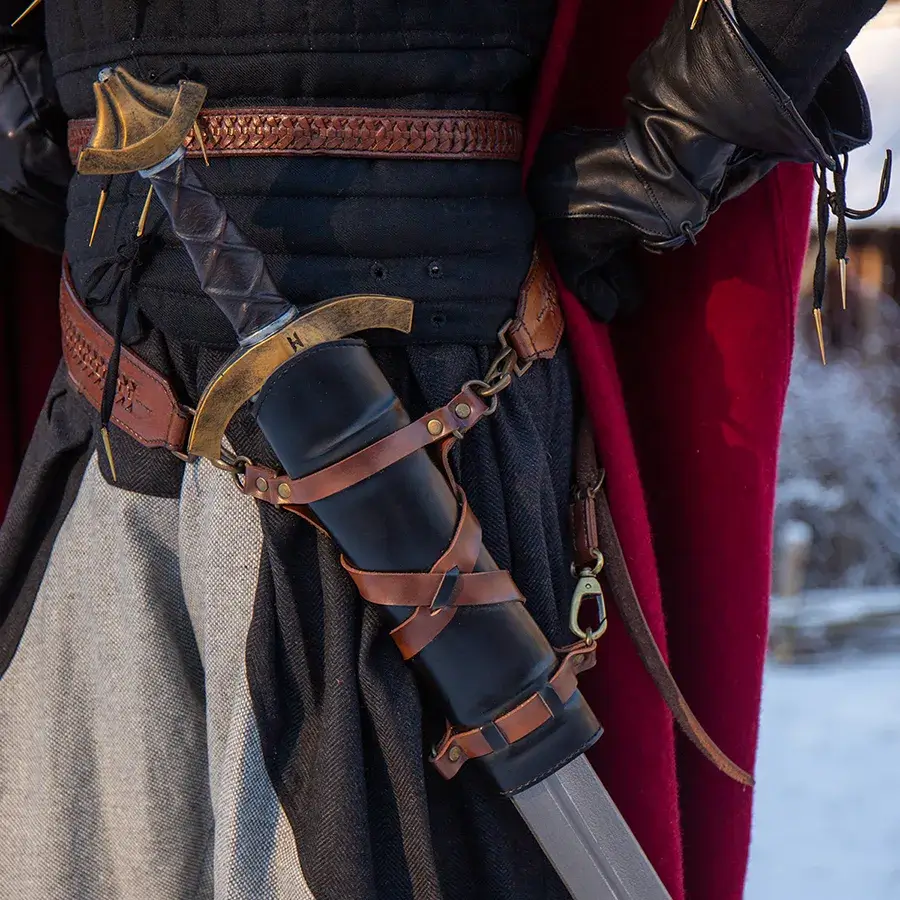
In addition, we wanted scabbards that are truly customizable and versatile, and scabbards that offer an all-in-one solution.
The Sword Belt Scabbard (faux-leather full sheath and faux-leather holder) is made to fit with our Sword Belt and Sword Belt Laced, but the ring attachment system makes it easy to use with any belt system, whether you prefer to have it on your hip - knight style - or your back, like the White Wolf.
While the Knights Scabbard (leather and faux-leather) offers an all-in-one solution where the belt is directly integrated into the scabbard.
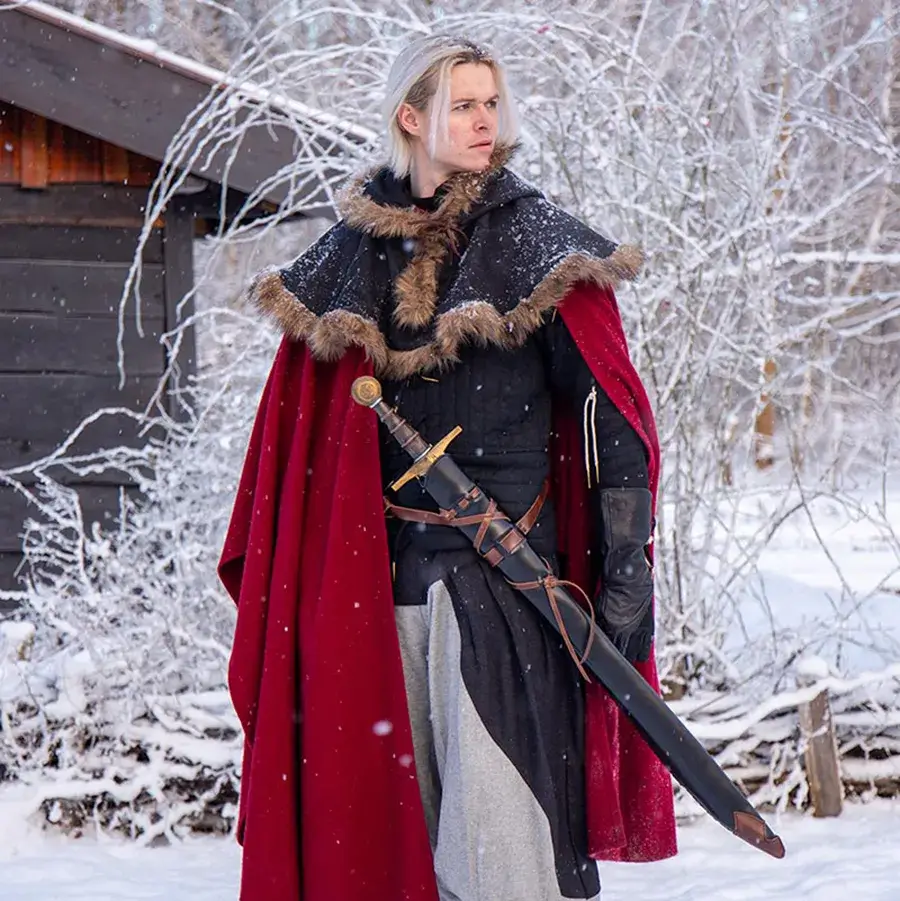
Finally, we also wanted to cater to the history enthusiasts among you, which is why we have created the Knight's Scabbard.
While still adhering to the design cores of practical use, the Knights Scabbard (leather and faux-leather) has sacrificed some adjustability for a historical look. Having the belt directly attached to the Scabbard, as we have seen on plenty of medieval drawings. Choose this scabbard if you want that Jon Snow moment of throwing down the Scabbard while still having belts and bags.
BROWSE OUR SCABBARDS
Headline
History Highlighted
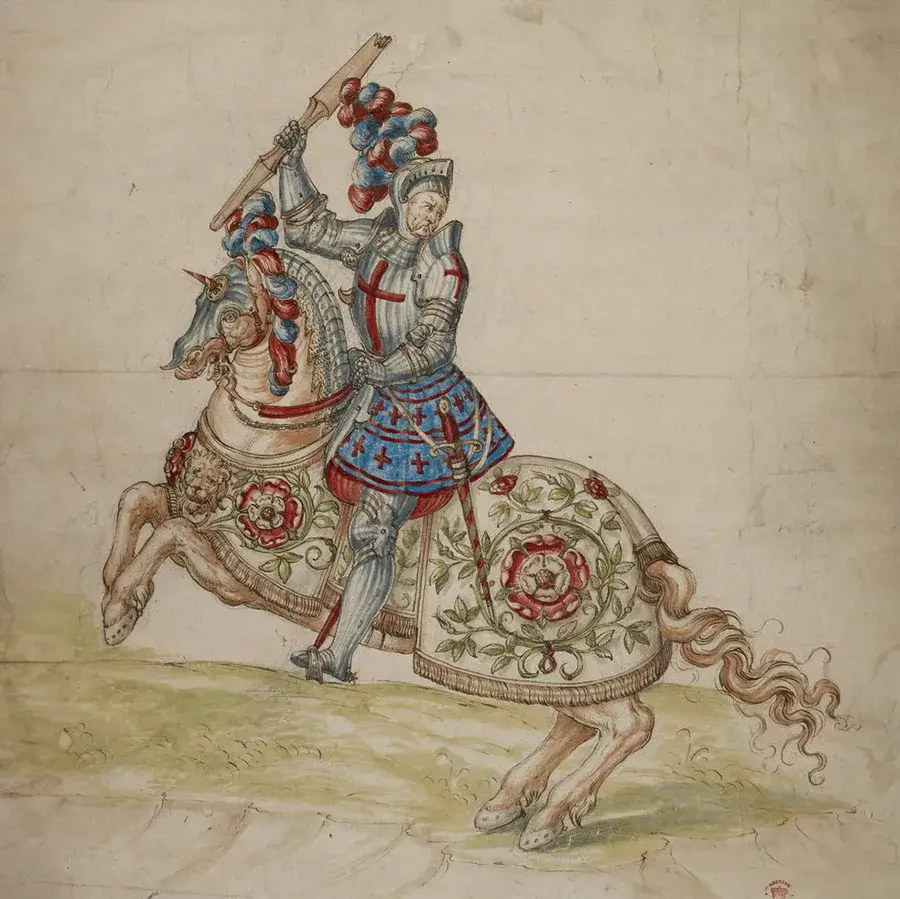
Image: courtesy of the British Library archives
Scabbards through time
Medieval scabbards evolved significantly throughout the medieval period, reflecting changes in art, culture, and martial practices. Initially, scabbards were utilitarian, crafted from wood and covered in leather with minimal decoration, focusing on the practical purpose of protecting the sword. Over the centuries, as chivalric culture flourished and heraldry became important, scabbards became elaborate works of art. By the late medieval period, they were highly ornate, featuring intricate leatherwork, metal fittings, and decorations that included religious and mythological scenes, heraldic symbols, and even precious stones. This evolution from simple protective sheaths to luxurious status symbols mirrored the medieval world's broader artistic and societal trends, showcasing the craftsmanship and aesthetic sensibilities of the time.
Notable examples of decorated scabbards, such as the legendary scabbard of Charlemagne and the Sword of Saint Maurice, illustrate the high level of artistry achieved in scabbard decoration by the late medieval period. While the actual scabbards of Charlemagne and the Cawood Sword might be more myth than reality, they exemplify the ideal of magnificence and the detailed craftsmanship of the era. These artefacts, though rare, provide insight into the importance of scabbards not just as protective equipment but as symbols of power, prestige, and artistic expression during the medieval period.
Scabbards, Symbolism and Status
In medieval society, the scabbard was more than just a functional accessory for carrying a sword; it was a profound symbol of the wearer's status, identity, and affiliations. Scabbards were often richly decorated with heraldic symbols, intricate inscriptions, and vibrant colours that conveyed the wearer's allegiance, social rank, and personal achievements. The craftsmanship and materials used in a scabbard could indicate the wealth and prestige of its owner, with the most luxurious examples made from fine leather, adorned with gold or silver, and embellished with precious stones. In contrast, individuals of lower status used simpler scabbards made from less expensive materials and with minimal decoration.
This symbolism and the role of scabbards as markers of identity have been embraced in the world of LARP, where they serve their practical purpose and as a vital aspect of character development and storytelling. LARP participants often customise their scabbards to reflect their character's backstory, affiliations, and achievements within the game's universe. Just as in medieval times, the style and decoration of a LARP scabbard can indicate a character's rank within the game's social hierarchy, their allegiance to a particular house or faction, and their personal history and achievements. This attention to historical detail and symbolism enhances the immersive experience of LARP, allowing players to inhabit their characters and the game world more fully. Through the careful selection and customisation of their scabbards, LARPers contribute to a rich tapestry of storytelling and character interaction that mirrors the complex social dynamics of medieval society.
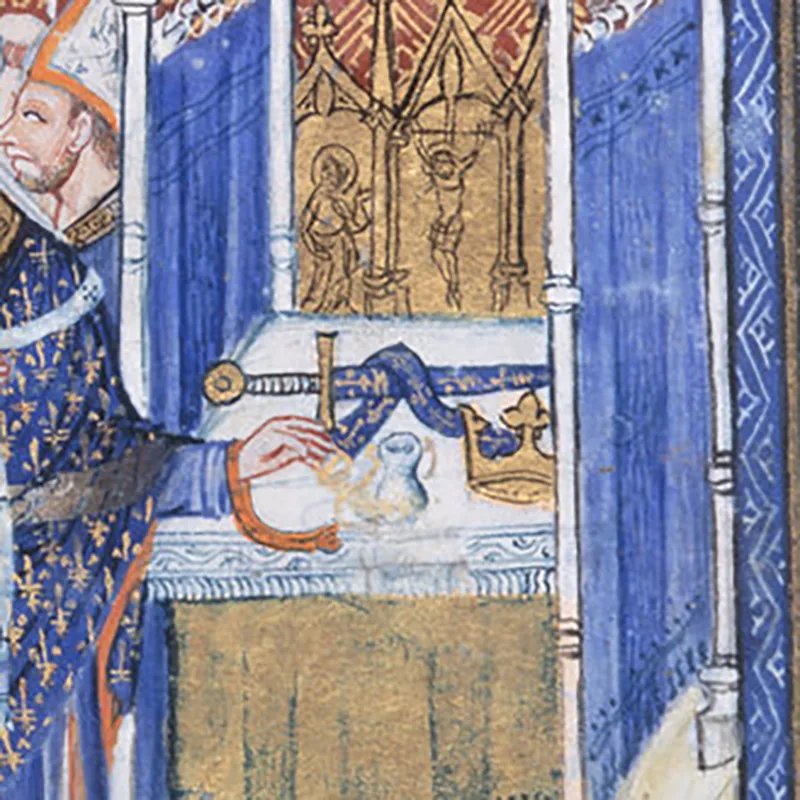
Image: courtesy of the British Library archives
Storied Scabbards
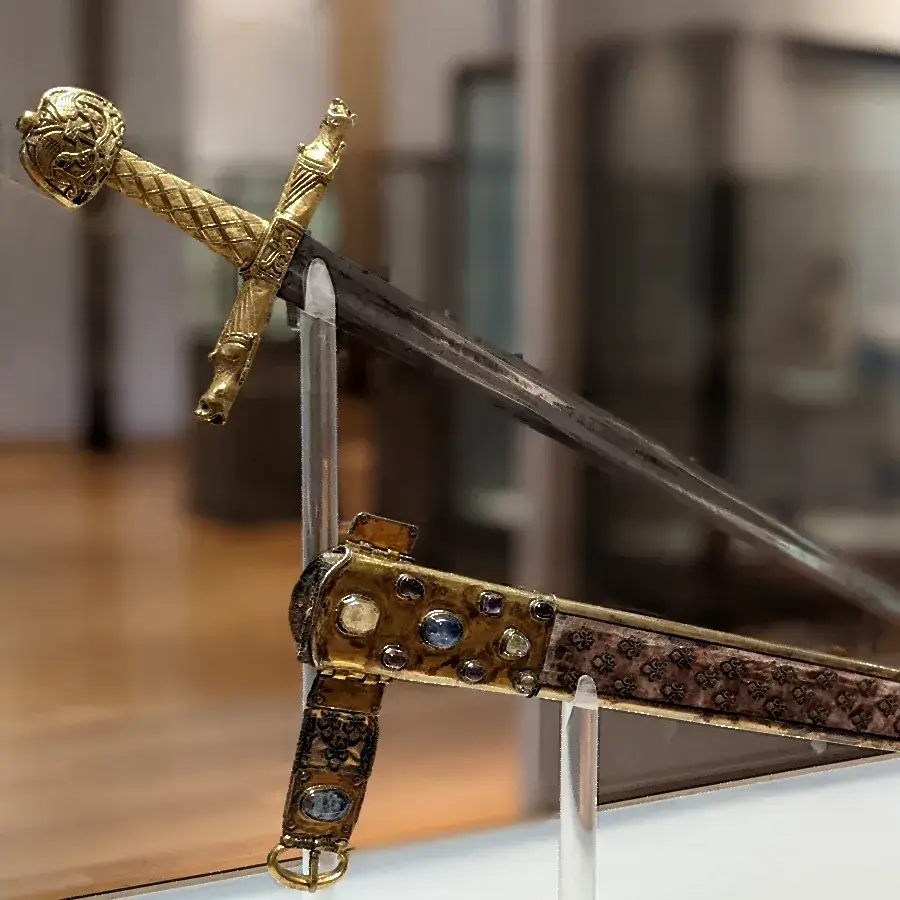
Image: courtesy of Wikimedia Commons, the free media repository
The Scabbard of Charlemagne's Joyeuse:
Charlemagne, also known as Charles the Great, was a medieval emperor who ruled much of Western Europe from 768 to 814. His legendary sword, Joyeuse, was said to have a scabbard of extraordinary craftsmanship. According to historical texts, the scabbard was adorned with gold and precious stones, reflecting the immense power and wealth of Charlemagne. The scabbard and the sword symbolised the divine right to rule and were a key emblem of the Carolingian Renaissance.
The Scabbard of the Sword of Saint Galgano:
According to legend, Saint Galgano Guidotti was a knight who turned to a hermit's life and thrust his sword into a rock as a symbol of peace, where it miraculously remained. To this day, the sword can still be found plunged into a rock, in the chapel of Montesiepi in Chiusdino, Tuscany, Italy. The metal used for the sword has been authenticated to the late 1200th century, the same years as St. Galgano lived. This story and these findings, has helped bolster Italy's version of the Excalibur legend.
The scabbard of this sword, preserved for centuries in the Montesiepi Chapel near Siena, Italy, is often overlooked due to the miraculous nature of the sword itself. However, it symbolises the transition from a life of violence to one of peace and devotion, making it a significant relic in Christian history.
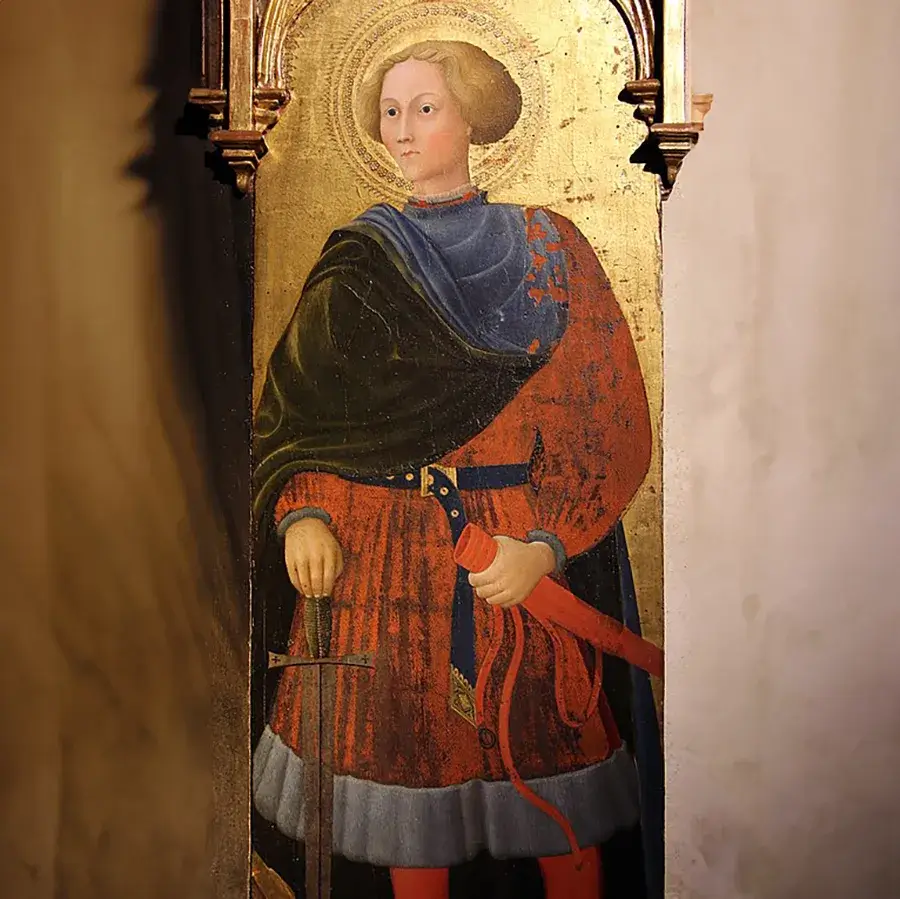
Image: courtesy of Wikimedia Commons, the free media repository
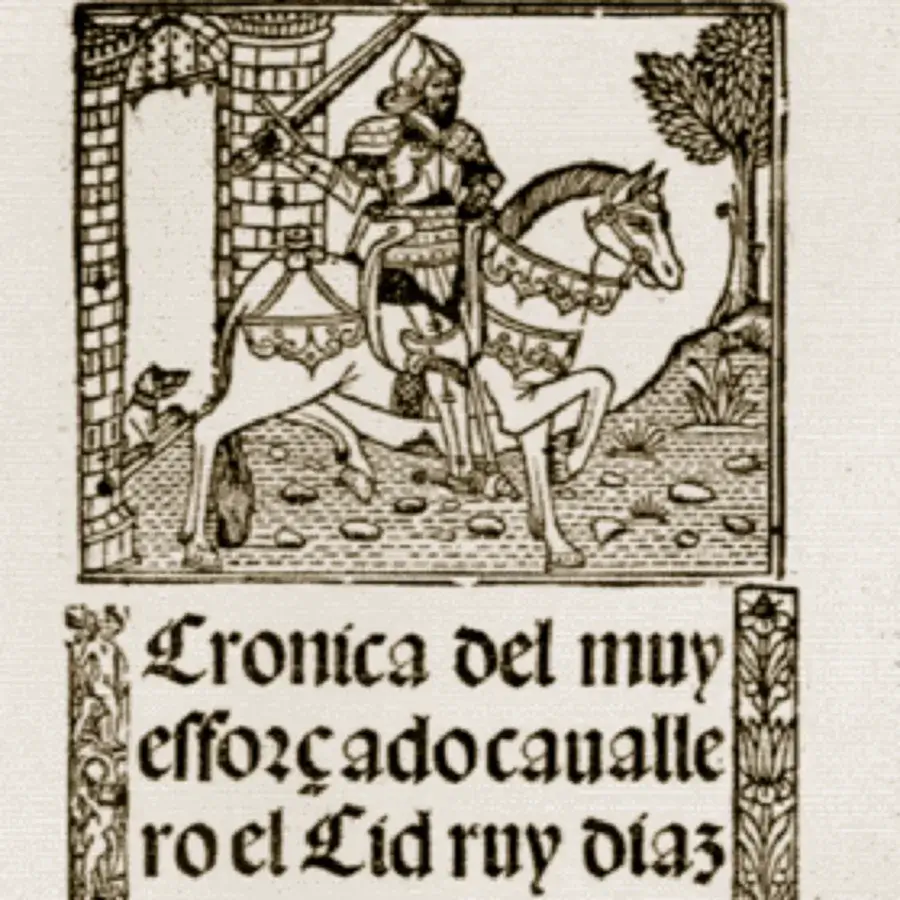
The Scabbard of the Cid Campeador:
The Cid Campeador, known as Rodrigo Díaz de Vivar, was a Castilian nobleman and military leader in medieval Spain. His sword, Tizona, is one of the most famous medieval Spanish swords, and its scabbard is an emblem of the Cid's victories and heroism. Historically, the scabbard would have been crafted to match the prestige of the sword, likely adorned with leatherwork, metal fittings, and possibly inscriptions or heraldic symbols reflective of the Cid's status and achievements.
These scabbards, through their association with legendary figures and exquisite craftsmanship, underscore the scabbard's role in protecting the blade, but as a symbol of authority, sanctity, and personal virtue in the Middle Ages.

 Denmark
Denmark
 United States
United States
 United Kingdom
United Kingdom
 Germany
Germany
 Sweden
Sweden
 Norway
Norway
 Åland
Åland
 Australia
Australia
 Austria
Austria
 Belgium
Belgium
 Brazil
Brazil
 Bulgaria
Bulgaria
 Canada
Canada
 Canary Islands
Canary Islands
 Chile
Chile
 China
China
 Croatia
Croatia
 Cyprus
Cyprus
 Czech Republic
Czech Republic
 Estonia
Estonia
 Faroe Islands
Faroe Islands
 Finland
Finland
 France
France
 Greece
Greece
 Greenland
Greenland
 Hungary
Hungary
 Iceland
Iceland
 India
India
 Indonesia
Indonesia
 Ireland
Ireland
 Israel
Israel
 Italy
Italy
 Japan
Japan
 Kuwait
Kuwait
 Latvia
Latvia
 Lithuania
Lithuania
 Luxembourg
Luxembourg
 Malaysia
Malaysia
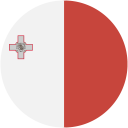 Malta
Malta
 Mexico
Mexico
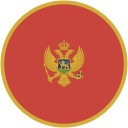 Montenegro
Montenegro
 Nepal
Nepal
 Netherlands
Netherlands
 New Zealand
New Zealand
 Pakistan
Pakistan
 Peru
Peru
 Poland
Poland
 Portugal
Portugal
 Georgia
Georgia
 Reunion
Reunion
 Romania
Romania
 Serbia
Serbia
 Singapore
Singapore
 Slovakia
Slovakia
 Slovenia
Slovenia
 South Africa
South Africa
 South Korea
South Korea
 Spain
Spain
 Switzerland
Switzerland
 Taiwan
Taiwan
 Turkey
Turkey
 Ukraine
Ukraine
 Puerto Rico
Puerto Rico
 Honduras
Honduras
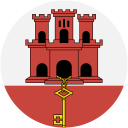 Gibraltar
Gibraltar
